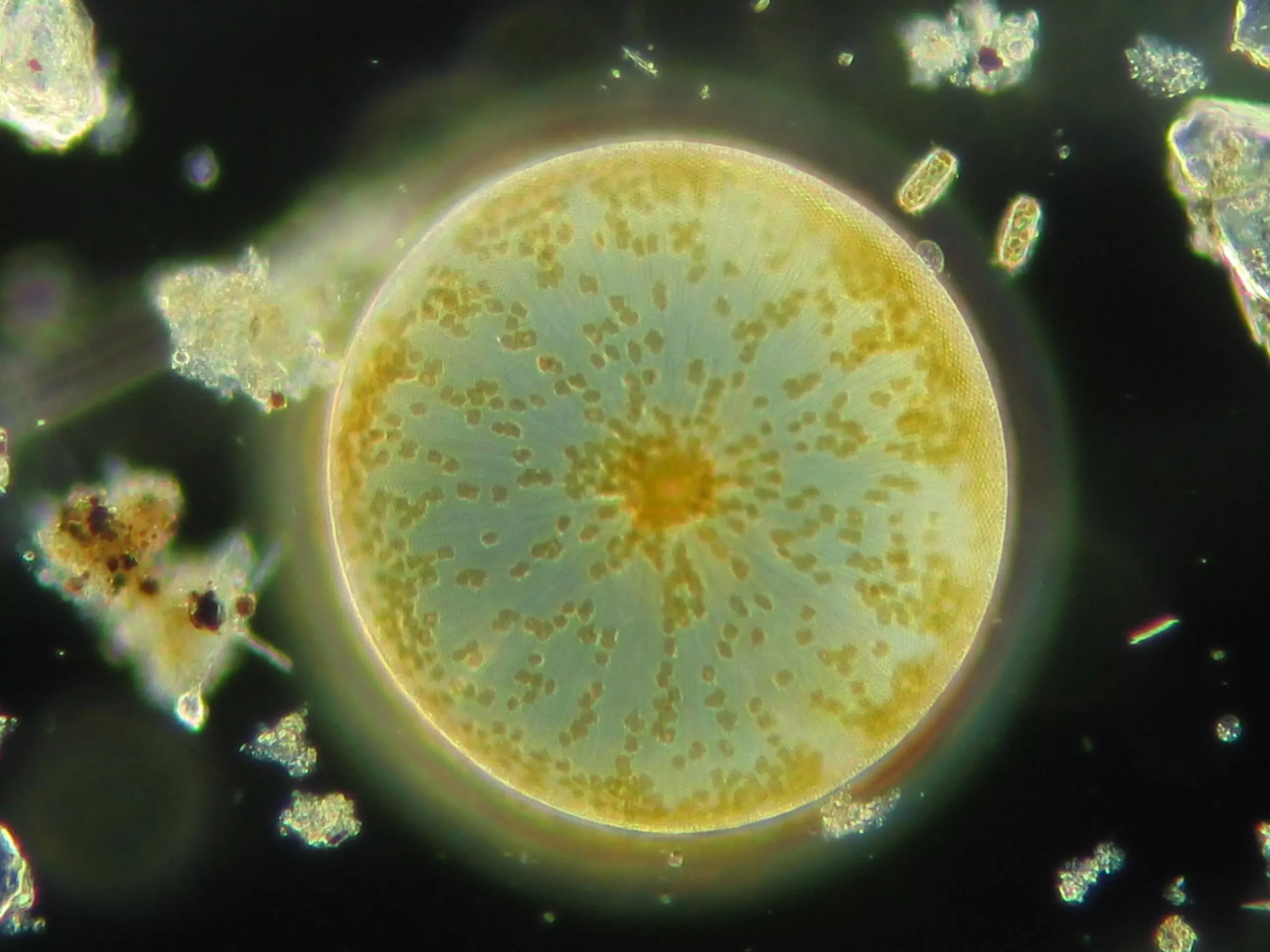Phytoplankton, small photosynthetic organisms found in the ocean, have a vital role in the global carbon cycle and can influence Earth’s climate. A recent study has shed light on how variations in the physiology of phytoplankton, specifically regarding nutrient uptake, can impact the chemical composition of the ocean and even the atmosphere. This suggests that changes in marine phytoplankton physiology can have far-reaching effects on the global climate.
Phytoplankton in the ocean play a central role in the global carbon cycle. Through the process of photosynthesis, they capture and transport carbon (C) to the deep ocean, helping to regulate carbon dioxide (CO2) levels in the atmosphere. While carbon is essential for the growth of phytoplankton, they also rely on other nutrients like nitrogen (N) and phosphorus (P) for their cellular functioning.
Phytoplankton stoichiometry refers to the relative proportions of different elements, such as carbon, nitrogen, and phosphorus, within these organisms. The stoichiometry of phytoplankton is closely linked to climate through various factors like the oceanic carbon pump, nutrient cycling, food web dynamics, and responses to climate-related variables such as CO2 concentration and temperature.
In the 1930s, Alfred C. Redfield, an American oceanographer, made a significant discovery. He found that the concentrations of carbon, nitrogen, and phosphorus in marine phytoplankton roughly followed a fixed ratio of 106:16:1, now known as the Redfield ratio. Another surprising finding was that the concentration of nitrate, a primary nitrogen nutrient source, was consistently 16 times higher than the concentration of phosphate, a primary phosphorus nutrient source. This similarity in nitrogen-to-phosphorus (N:P) ratios between phytoplankton and seawater indicated a strong connection between the particulate (phytoplankton) and dissolved (seawater) nutrient pools.
The relationship between the N:P ratio in dissolved and particulate material has long puzzled the scientific community. Dr. Chia-Te Chien from the GEOMAR Helmholtz Center for Ocean Research and his colleagues conducted a modeling study to explore this relationship further. Their study, published in the journal Science Advances, highlights the importance of variable C:N:P ratios of phytoplankton in regulating dissolved oceanic nutrient ratios globally.
The researchers used a computer model that simulated algal physiology coupled with an Earth system model. This allowed them to manipulate the characteristics of phytoplankton and observe how it affected the nitrogen and phosphorus ratios in the water. Through an ensemble of 400 simulations, they discovered complex feedback mechanisms involving changes in phytoplankton nutrient content, oceanic oxygen levels, nitrogen fixation, and denitrification.
Contrary to the commonly hypothesized strong link between phytoplankton and seawater nutrient ratios, the model results challenge the inherent similarity observed between the two. Instead, the results highlight that the current ratios are a specific state that may be subject to change over time, a concept not captured by decades of ocean in situ observations. Additionally, the study underscores the potential influence of phytoplankton nitrogen and phosphorus quotas on atmospheric CO2 levels over geological time scales, implying that stoichiometric variations may have a more significant impact on marine biogeochemistry and global climate than previously thought.
Understanding the intricate connections between phytoplankton physiology, nutrient ratios, and climate conditions is crucial for making accurate predictions about the future of our planet’s ecosystems and climate. By demonstrating the sensitivity of atmospheric CO2 concentrations and oceanic and air temperatures to changes in elemental stoichiometry induced by phytoplankton physiology, the study highlights the need to incorporate these physiological details into climate models.
The study’s findings emphasize the significant role that phytoplankton physiology plays in shaping the chemical composition of the ocean and the atmosphere. The complex relationships between nutrient ratios, carbon cycling, and climate have far-reaching implications for our understanding of Earth’s climate system. By exploring these connections further, scientists can refine their predictions and develop more accurate models to anticipate and mitigate the future impacts of climate change.


Leave a Reply